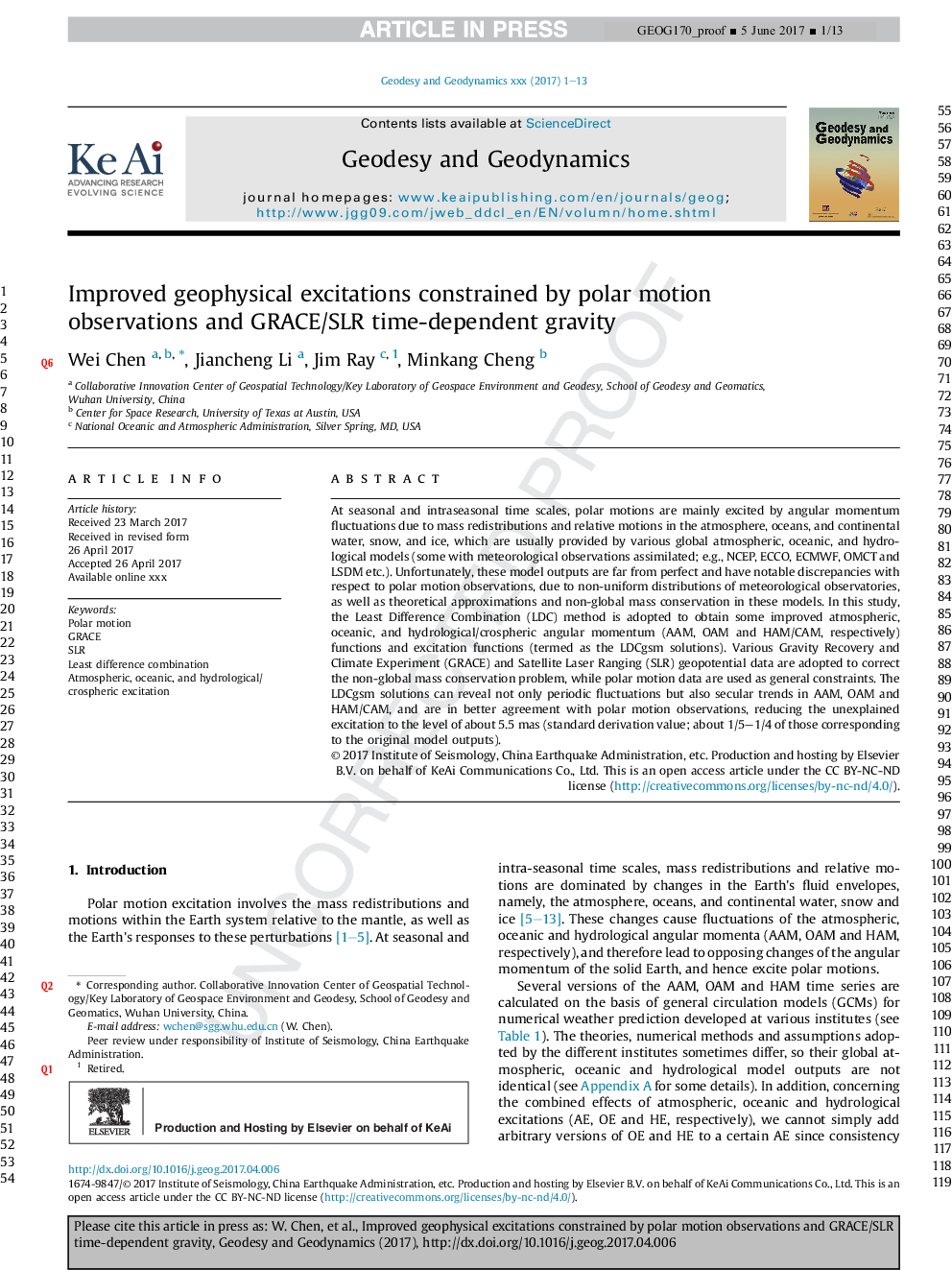| Article ID | Journal | Published Year | Pages | File Type |
|---|---|---|---|---|
| 8907884 | Geodesy and Geodynamics | 2017 | 13 Pages |
Abstract
At seasonal and intraseasonal time scales, polar motions are mainly excited by angular momentum fluctuations due to mass redistributions and relative motions in the atmosphere, oceans, and continental water, snow, and ice, which are usually provided by various global atmospheric, oceanic, and hydrological models (some with meteorological observations assimilated; e.g., NCEP, ECCO, ECMWF, OMCT and LSDM etc.). Unfortunately, these model outputs are far from perfect and have notable discrepancies with respect to polar motion observations, due to non-uniform distributions of meteorological observatories, as well as theoretical approximations and non-global mass conservation in these models. In this study, the LDC (Least Difference Combination) method is adopted to obtain some improved atmospheric, oceanic, and hydrological/crospheric angular momentum (AAM, OAM and HAM/CAM, respectively) functions and excitation functions (termed as the LDCgsm solutions). Various GRACE (Gravity Recovery and Climate Experiment) and SLR (Satellite Laser Ranging) geopotential data are adopted to correct the non-global mass conservation problem, while polar motion data are used as general constraints. The LDCgsm solutions can reveal not only periodic fluctuations but also secular trends in AAM, OAM and HAM/CAM, and are in better agreement with polar motion observations, reducing the unexplained excitation to the level of about 5.5Â mas (standard derivation value; about 1/5-1/4 of those corresponding to the original model outputs).
Keywords
Related Topics
Physical Sciences and Engineering
Earth and Planetary Sciences
Earth-Surface Processes
Authors
Wei Chen, Jiancheng Li, Jim Ray, Minkang Cheng,
